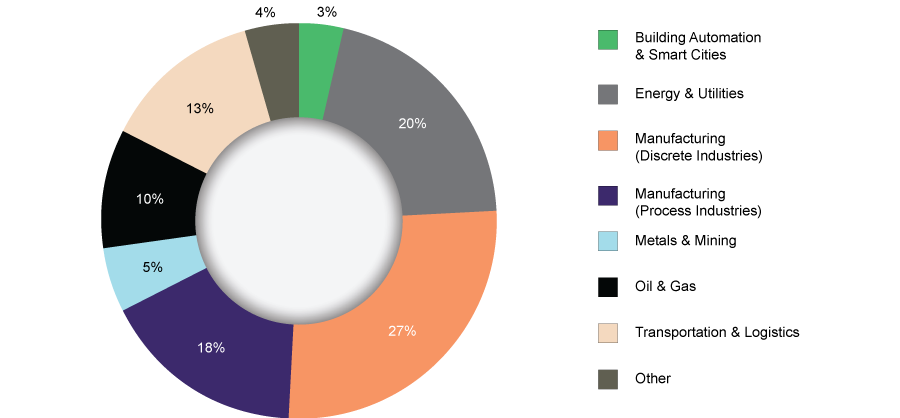Industrial Automation & Sensors Blog
Scalability Will Enable Next Wave of IIoT Platforms Market Growth
by Jared Weiner | 3/11/2024
New Research Available: The Global Market for Industrial IoT Platforms
In recent years, growth within the market for Industrial IoT Platforms has been driven in large part by the increasing availability of affordable processors, sensors, and other hardware components. This, in turn, has lowered IIoT adoption barriers for small to midsize industrial organizations. Initiatives driven by economic- and labor-related factors have contributed to a growing interest in automating various operational processes―such as those for quality assurance and remote monitoring―further fueling market growth.
In 2023, spending in this market was strongest in the manufacturing sector. For manufacturers, the allure of improving production output (or efficiency) despite the many economic challenges that followed COVID-19 was compelling enough to drive market-leading investments in this technology. The energy & utilities segment followed and will be among the fastest-growing markets through 2028, particularly as sustainability goals and other environmental initiatives drive operators to pursue targets around carbon emissions or energy management. The transportation & logistics industry will generate the strongest rate of growth through the end of the forecast period. The well-publicized global supply chain issues of the last several years are driving rapidly increasing investments in technologies that can enable more agility and adaptability in the event of unforeseen breakdowns at any given point of the chain.
Global Share of Industrial IoT Platforms Revenue by Vertical Market, 2023
(Percentage of Revenue)

When this market first began taking shape, competitors generally centered their strategies on offering general purpose platforms to help enable their customers to develop and deploy customized applications to serve their operational objectives. Today, that strategy has shifted, with market leaders and other forward-thinking market participants now ensuring their customers can quickly realize value from their IIoT initiatives by providing out-of-the-box applications that serve distinct objectives within individual business units or functions.
The next step in this evolution is scalability. For an industrial organization to make the most of its digital transformation, the operational and business outcomes afforded by IIoT initiatives must span the entirety of that organization’s OT and enterprise/IT systems. Because systems such as those for customer resource management (CRM), enterprise resource planning (ERP), (computerized) maintenance management (CMMS), warehouse management (WMS), and other enterprise functions are each at the very least indirectly tied to production requirements, each stands to benefit considerably from the integration and data sharing enabled by IIoT platforms. Only with these integrations in place will organizations be able to complete their progression from automated production to adaptive production to autonomous production.
More Insight
Which IIoT use cases are most common among deploying organizations? How have industrial automation suppliers adapted their platforms to accommodate heterogeneous operating environments featuring competitors’ hardware? Which traditional IoT/cloud vendors have been most successful transitioning to the industrial/OT space? Which niche platform vendors offer solutions capable of successfully competing in this market? VDC’s recently published study explains.
This program includes detailed analyses of both the supply side and the demand side of this market.
Please contact us for more information.